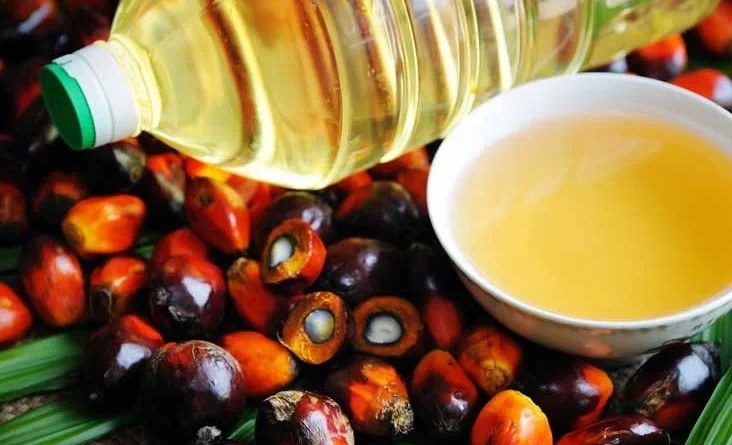Liberia: Audit Uncovers Pollution Spree at Palm Oil Mill, Exposing GVL’s Lie
A palm oil mill operated by Golden Veroleum Liberia (GVL) in Sinoe County led to a pattern of pollution, violating the company’s environmental permit, an independent audit report found.
The periodic audit by the Monrovia-based auditor Green Consultancy Inc. revealed mill wastes were improperly managed, the facility pollutes water sources, and it causes air pollution for adjacent communities.
“GVL is not in full compliance with some of the Environmental Protection Agency (EPA) permit conditions and specifications,” the report said. These include not submitting quarterly and biannual environmental monitoring reports since the issuance of the Permit.”
The findings mean GVL has violated the terms of its permit, a possible cause for revocation of the document, and the Environmental Protection and Management Law, a ground for punishment. The DayLight has reached out to the EPA concerning enforcement of the polluter-pays principle of the law.
The report is another chapter in GVL’s notoriety after it desecrated a sacred hill to construct the mill and encroached on local communities’ land to develop its plantation in 2013. GVL had signed a US$1.6 billion concession agreement with the Liberian government in 2010 for 65 years – covering 220,000 hectares in Sinoe, Maryland, Grand Kru, River Cess, and River Gee.
GVL did not immediately respond to queries for comments on the report. However, the water quality test contradicts a recent GVL press release that the audit “did not identify any issues.”
‘Improper’ waste management
GVL performed poorest in managing chemicals and wastes from the mill, which produces 40 metric tons of crude palm oil per hour. The company abused wetlands and piled palm husks in open fields, risking a chemical-laced runoff into nearby watercourses, the report said.
Citing results of water quality tests from the University of Liberia Civil Engineering Laboratory uncovered an illegal level of phosphate. The chemical, found in palm husks, causes kidney disease in people and kills aquatic species, scientists say. Waterways around the mill were unclear, contained many undissolved particles, and had other issues.
‘Unbearable’ odor
GVL uses effluent from the palm oil milling process as a fertilizer. The wastewater is treated with chemicals, stored in three large ponds, and applied to the land as fertilizer. Palm husks serve the same purpose.
This technology is commonplace across the oil palm industry worldwide as an alternative to chemical fertilizers. However, among other noncompliance, GVL did not even barricade the ponds with caution tape to prevent trespassers. The ability of the wastewater to decompose substances was above the approved level due to irregular testing before application.
This, the audit revealed, led to can lead to the release of harmful gas, which oozes an “unbearable” odor. “The current level of [palm oil mill effluent] reported is likely to generate large quantities of methane gas that has ozone-depleting potential and is associated with health consequences,” the report said.
It added that GVL had not improved on that aspect of its operation since the last audit in 2019. (Depletion of the ozone layer, which protects the earth from the invisible sun-ray, causes global warming and then climate change.)
Auditors heard complaints of speedy and uncovered GVL trucks carrying palm nuts and husks spreading dust and an “undesirable” odor in local communities. The report documented that GVL had retrogressed in handling such complaints. This finding further contradicts GVL’s claim in the press release to guarantee the investigation and address all communities’ grievances.
“The quarterly and biannual monitoring of the air quality to ensure acceptable standards as required by the Environmental Protection Agency are not being met,” the report said.
Substandard Safety Gear
GVL’s workplace was unsafe, according to the report.
Workers did not wear proper safety gear or personal protective equipment (PPE) in line with EPA standards. In fact, GVL did not employ health and safety staff at the mill, and there was no training for staff.
Most of the fire extinguishers at the mill had expired, with noise above the approved level, wastewater spillage, and clogged drainage at the facility.
“Ensure that workers are trained in environmental responsibility as well as operating and maintenance procedures of the mill, spill response, managing drains, etc.,” the report urged GVL.
“Certificates should be issued to trainees after the process.”
Auditors observed barrels of hydrochloric acid—used to dissolve wastes from the mill but dangerous to humans—were exposed to workers at a treatment plant.
“No caution [tips] alerting movement of workers on floor tiles, improper maintenance (untidiness) of the facility, and caution signs not properly defined,” the report said.
This article has been republished from The Daily Observer.

